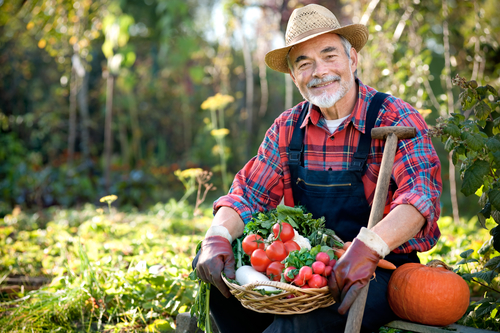
4 Simple Steps for Growing Your Own Organic Food
Reasons
There are a lot of good reasons to grow your own organic food. In fact, there is a lot of increasingly disturbing evidence that presents equally good reasons not to buy non-organic supermarket produce. For example, one recent study of pesticide exposure in children in a major U.S. metropolitan area found that traces of garden chemicals were found in 99 percent of the 110 children who were tested. Further, according to the Environmental Protection Agency, 90% of fungicides, 60% of herbicides and 30% of insecticides are considered carcinogenic.
On a happier note, growing your own organic food is not only healthier, but it can save you a lot of money. Produce departments are taking full advantage of an educated public’s desire for organic food, a fact reflected in the huge difference in price. In addition to reducing your grocery bill, by transforming your lawn into a garden, you’ll also save money on your water bill. Trees and shrubs require anywhere from two and a half to four times less water than maintaining a lawn.
Simple Tricks to Start Off
As the person in charge of production of your own herbs, fruits and vegetables, you can replace chemical pesticides with natural alternatives. One such alternative is a little cayenne pepper or horseradish mixed with garlic paste added to a gallon of water. It’s important to test the strength on a leaf or two because if it’s too strong, it can burn the plant. However, it’s remarkably effective as a pest repellent.
You’ll also be able to decide what kind of soil you want to use to grow your food. Different plants thrive in different types of soil. For example, some, such as flowers and annual vegetables prefer peat-free soil, while blueberries require lime-free compost. Fruit trees benefit most from a soil based mix that releases nutrients slowly due to their long lives.
Mulching
No matter what kind of soil composition you choose, mulching is an important factor in preparing it for planting. Mulching is the process of enriching the soil. Two benefits of mulching are weed reduction and water conservation. Organic mulches are commonly made from decomposing plant materials. Many people set up a worm farm to provide natural compost for mulching. Worms are also able to detoxify soil of due to their ability to break down substances, including heavy metals like cadmium and lead.
Experts recommend not using live green materials rather than those already in an advanced state of decomposition because they can leach needed nitrogen from the soil. Proper mulching requires the soil to be covered with up to three inches of material to achieve the maximum benefits. However, the mulch should not cover the plant’s base, but only the root zones.
Methods
Depending on what kinds of vegetables you want to grow and how long your local growing season is, you can begin growing seedlings indoors, and then transplant them into your garden. It can take between four and twelve weeks for seedlings to sprout. The benefit is that you can then harvest your vegetables four to six weeks earlier than if you had planted the seeds directly into the ground.
This method is great for plants that are slow to mature or sensitive to weather conditions. Plants that do well with this method include peppers, melons, eggplants and tomatoes. However, some plants, such as root vegetables like beets and carrots, or that grow on stalks like corn and peas or vines, like zucchini, can’t be transplanted well.
A good time for transplanting is when the temperature has reached at least 45 degrees Fahrenheit. To avoid the plant going into shock, it’s a good idea to place them outside for a few hours at a time to accustom them to the change before transplanting them into the ground. Incremental exposure to the elements, during which you should avoid placing them in direct sunlight, helps the plant adapt successfully to its new environment and weather conditions. The best time of day for planting the seedlings is in the late afternoon when it’s cool.
Finally, many websites offer tips about how to maximize your organic garden harvest, as well as how to preserve your fruits and vegetables to enjoy year round. With a bit of research, good will and patience, you too can be well on your way of growing your own healthy food.
About the Author
Originally from Europe, currently situated in Brisbane, AUS where I work for Brisbane Tree Experts. I support sustainable lifestyle and try to help my family, friends, and readers of several blogs where I contribute live a more eco-friendlier lifestyle.
* This article was originally written and published on http://www.organicangels.com/blog/4-simple-steps-for-growing-your-own-organic-food/

